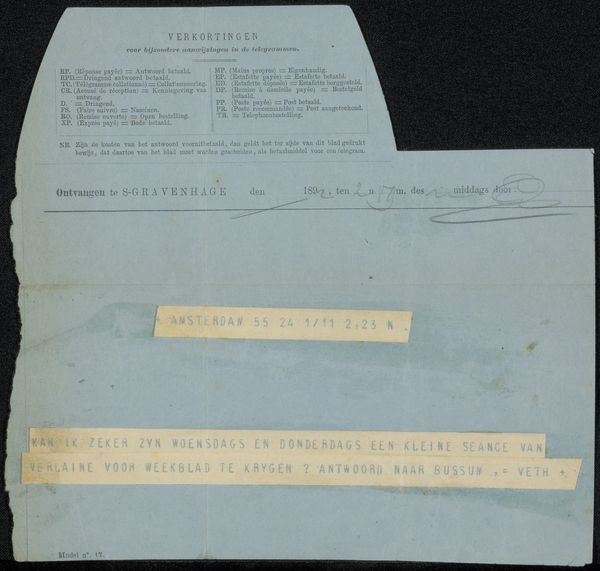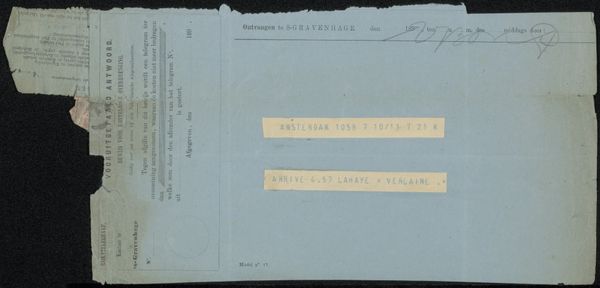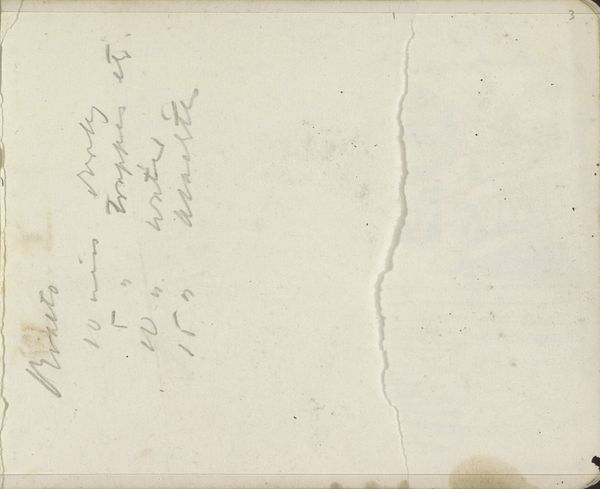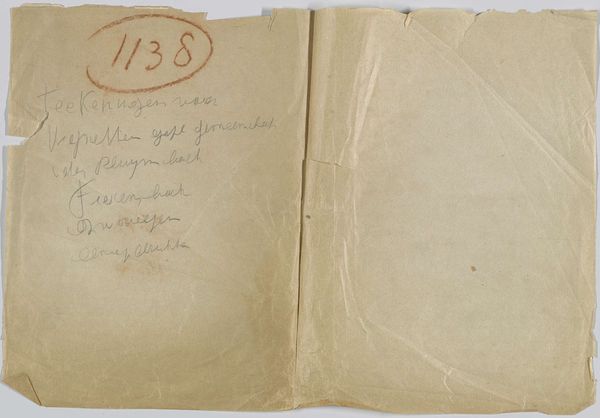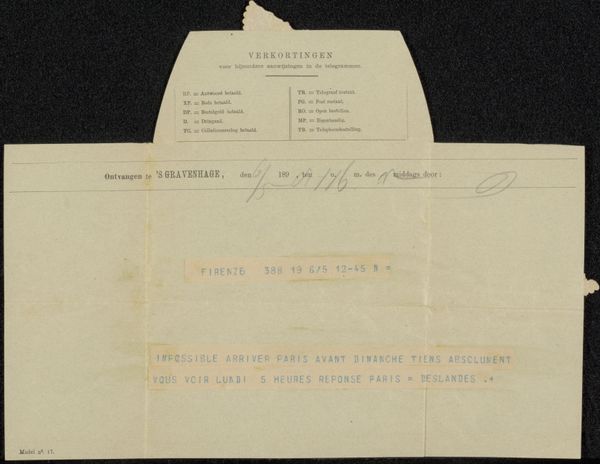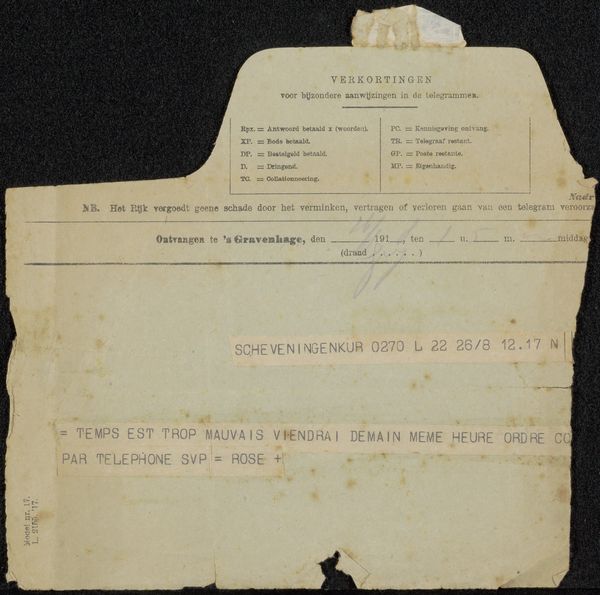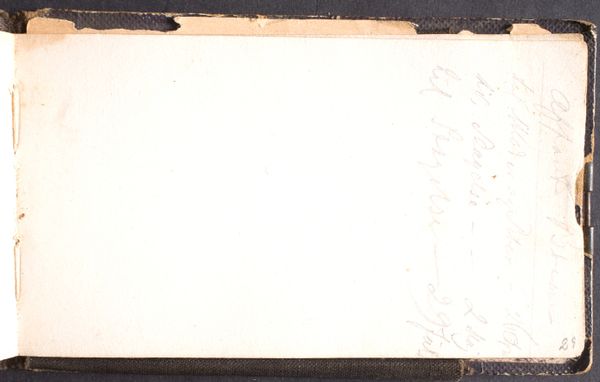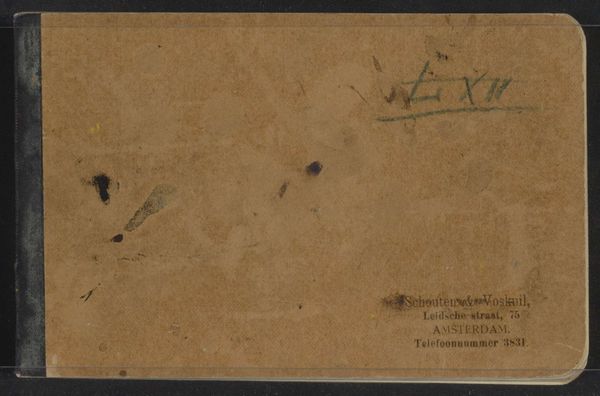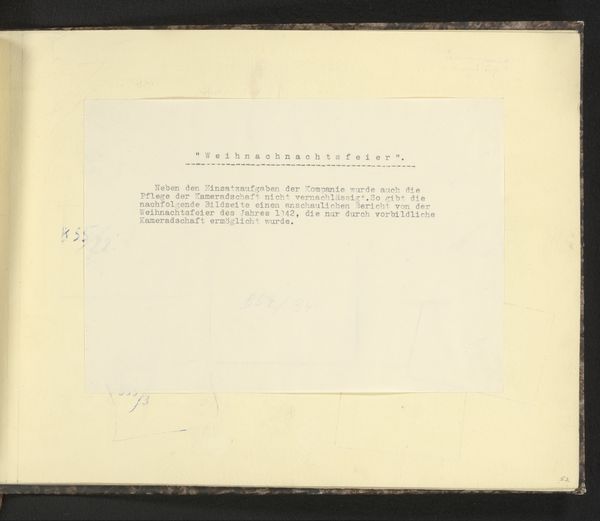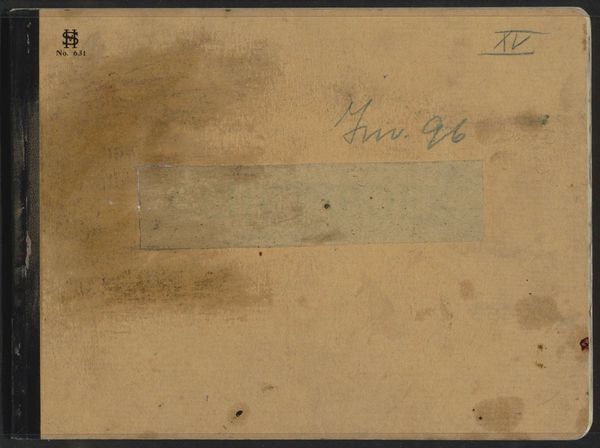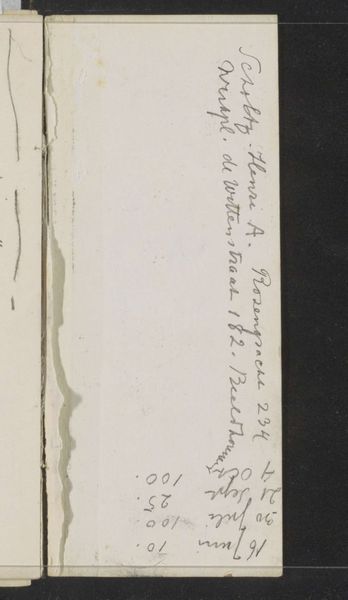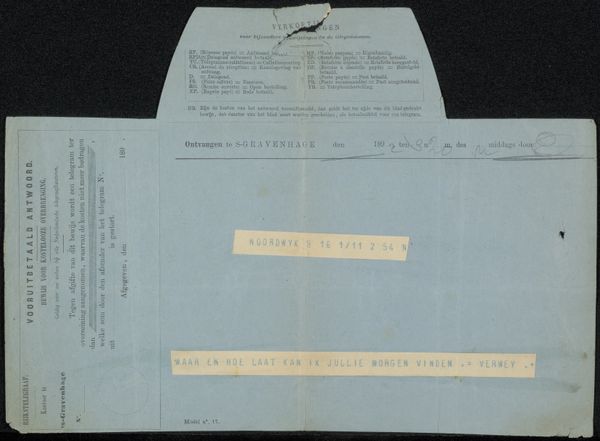
drawing, mixed-media, paper, typography
#
drawing
#
mixed-media
#
typography
#
white palette
#
paper
#
typography
Dimensions: height 73 mm, width 105 mm
Copyright: Rijks Museum: Open Domain
Curator: What a humble artifact—a small, torn piece of paper dating from 1945. This work, titled "Reisdocument," employs mixed media, including drawing and typography on paper. Look at how fragile it appears. Editor: It feels charged, doesn't it? The physical damage speaks of urgency, almost as if it were ripped from someone's hands, or clutched for dear life. I’m drawn to the weight such a small object could carry, particularly at the close of WWII. Curator: Absolutely. And that’s precisely the power it holds. "Reisdocument," which translates to "Travel Document," hints at a life in transit. Its white palette renders the obscured text almost ghostly. A fragmented narrative, really, composed through text and subtle mark-making. Editor: We can only see a snippet of the message: "...after verschiet, Gem. / akabte lung 598 (v) weitergeleitet..." Even partially translated, it tells a chilling story, pointing to forced movement, bureaucracy, perhaps even deportation under the guise of official procedure. A story so common, rendered so specific. It exposes how language itself becomes a tool of displacement. Curator: I’m also struck by the anonymous signature, or lack thereof. It's the artistic equivalent of a whisper—acknowledging presence, yet withholding identity. And perhaps in its incompleteness, it echoes every journey ever interrupted, making a profound statement about anonymity amid catastrophe. I am reminded of the way Adorno conceived of art after the Holocaust: "the unnameable." Editor: And by remaining anonymous, it simultaneously universalizes that experience. It transcends an individual's suffering by embodying the plight of so many displaced individuals, stateless and hunted by a depraved bureaucratic apparatus. The ripped edges and staining speak volumes here. Every crease suggests a folded hope. It urges us to look beyond the objective reality of the artwork itself and feel empathy, kinship... resistance. Curator: It definitely whispers questions about survival, documentation, and what we choose to leave behind when we're stripped of everything. The very act of viewing this fragile document makes us witnesses. Editor: I completely agree. And by grappling with what we do—and pointedly, what we do not—know about its creation, we gain an eerie sense of both hope and despair.
Comments
No comments
Be the first to comment and join the conversation on the ultimate creative platform.
